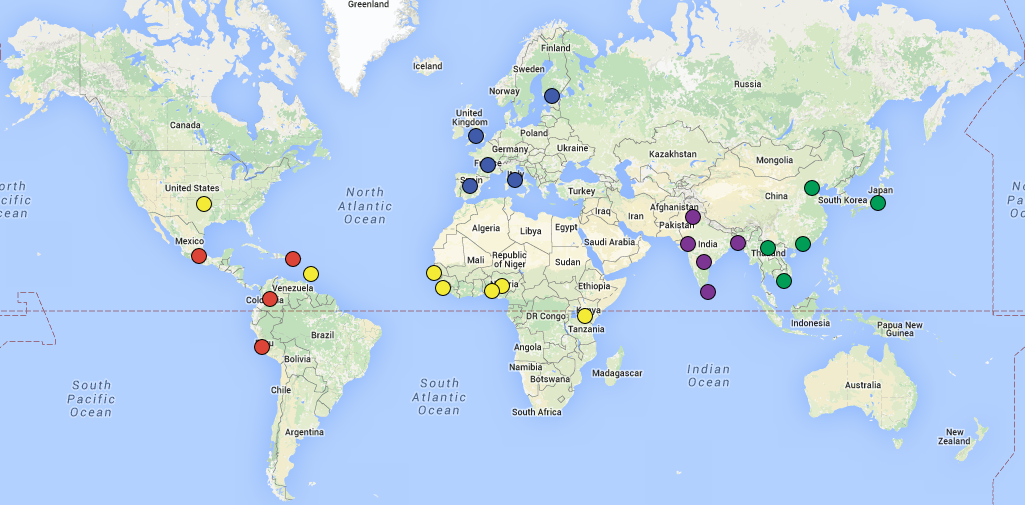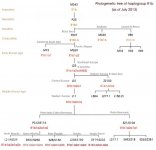Angela
Elite member
- Messages
- 21,823
- Reaction score
- 12,329
- Points
- 113
- Ethnic group
- Italian
This is a massive new paper. See:
[h=1]Punctuated bursts in human male demography inferred from 1,244 worldwide Y-chromosome sequences[/h]http://www.nature.com/ng/journal/vaop/ncurrent/full/ng.3559.html
"We report the sequences of 1,244 human Y chromosomes randomly ascertained from 26 worldwide populations by the 1000 Genomes Project. We discovered more than 65,000 variants, including single-nucleotide variants, multiple-nucleotide variants, insertions and deletions, short tandem repeats, and copy number variants. Of these, copy number variants contribute the greatest predicted functional impact. We constructed a calibrated phylogenetic tree on the basis of binary single-nucleotide variants and projected the more complex variants onto it, estimating the number of mutations for each class. Our phylogeny shows bursts of extreme expansion in male numbers that have occurred independently among each of the five continental superpopulations examined, at times of known migrations and technological innovations."
The supplement:
http://www.nature.com/ng/journal/vaop/ncurrent/extref/ng.3559-S1.pdf
[h=1]Punctuated bursts in human male demography inferred from 1,244 worldwide Y-chromosome sequences[/h]http://www.nature.com/ng/journal/vaop/ncurrent/full/ng.3559.html
"We report the sequences of 1,244 human Y chromosomes randomly ascertained from 26 worldwide populations by the 1000 Genomes Project. We discovered more than 65,000 variants, including single-nucleotide variants, multiple-nucleotide variants, insertions and deletions, short tandem repeats, and copy number variants. Of these, copy number variants contribute the greatest predicted functional impact. We constructed a calibrated phylogenetic tree on the basis of binary single-nucleotide variants and projected the more complex variants onto it, estimating the number of mutations for each class. Our phylogeny shows bursts of extreme expansion in male numbers that have occurred independently among each of the five continental superpopulations examined, at times of known migrations and technological innovations."
The supplement:
http://www.nature.com/ng/journal/vaop/ncurrent/extref/ng.3559-S1.pdf




